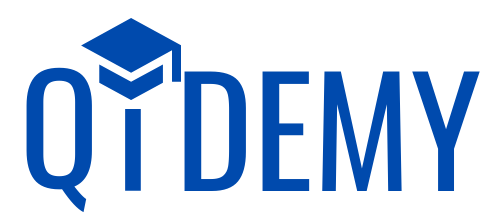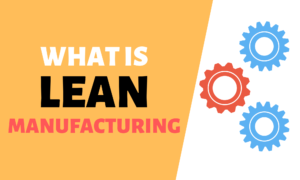Kaizen is a Japanese term that means “continuous improvement“. The Kaizen philosophy focuses on the idea that small, incremental changes can lead to significant improvements in productivity, quality, and efficiency. Kaizen event is a powerful tool used to implement the Kaizen philosophy within organizations, and they can help businesses achieve their goals faster than they ever thought possible.
Kaizen events are structured, multi-day events that bring together cross-functional teams to focus on a specific process or problem within an organization. During these events, team members use a variety of tools and methodologies to analyze the process, identify areas for improvement, and implement solutions in a rapid and focused manner.
The benefits of Kaizen events are numerous. They can lead to improved quality, increased productivity, faster lead times, and reduced costs. They can also help to create a culture of continuous improvement within an organization, leading to even more significant gains over time.
In this blog post, we’ll explore Kaizen events in more detail and discuss how they can be used as a secret weapon to achieve your goals faster. We’ll cover the basics of Kaizen events, including what they are, how they work, and why they are so effective. We’ll also provide practical tips for implementing Kaizen events in your organization, so you can start seeing the benefits for yourself. So let’s get started and discover the power of Kaizen events!
Table of Contents
Definition of Kaizen Events
Kaizen events, also known as Kaizen blitzes, are structured, multi-day events that bring together cross-functional teams to focus on a specific process or problem within an organization. The purpose of a Kaizen event is to make rapid and significant improvements to a specific process or problem, using a structured methodology and team-based approach.
What is the goal of Kaizen Event?
The goal of a Kaizen event is to make rapid and significant improvements to a specific process or problem within an organization.
The event brings together a cross-functional team to focus on the issue and use a structured methodology to identify areas for improvement and develop and implement solutions.
The ultimate objective is to improve the efficiency, quality, and productivity of the process, while reducing costs and lead times.
The focus on continuous improvement through Kaizen events also helps to create a culture of continuous improvement within the organization, where everyone is focused on identifying opportunities for improvement and making incremental changes to achieve greater efficiency and effectiveness.
What are the types of Kaizen Event?
There are several types of Kaizen events that organizations can use to improve their processes and achieve their goals. Here are some of the most common types of Kaizen events:
#1 Value Stream Mapping (VSM) Kaizen Event
This type of event is focused on identifying and eliminating waste within a process by mapping the flow of materials and information from start to finish. The team uses a structured methodology to identify areas of waste, such as excess inventory or unnecessary processing steps, and develops solutions to eliminate or reduce the waste.
#2 Rapid Improvement (RI) Kaizen Event
This type of event is designed to make rapid and significant improvements to a specific process in a short period of time, typically three to five days. The team uses a structured methodology to identify areas for improvement and develop and implement solutions.
#3 5S Kaizen Event
This type of event is focused on organizing the workplace for maximum efficiency and productivity. The 5S methodology includes five steps: Sort, Set in Order, Shine, Standardize, and Sustain. The team works together to sort and organize materials and tools, establish a visual workplace, and implement procedures for maintaining the organization.
#4 Total Productive Maintenance (TPM) Kaizen Event
This type of event is focused on improving the reliability and efficiency of equipment and machinery within a process. The team uses a structured methodology to identify sources of equipment downtime and develop solutions to improve maintenance and reduce downtime.
#5 Kaizen Event for Quality Improvement
This type of event is focused on improving the quality of a process or product. The team uses a structured methodology to identify sources of defects or quality issues, develop solutions to eliminate or reduce defects, and implement new quality control procedures to ensure ongoing improvement.
Overall, the type of Kaizen event used will depend on the specific goals and needs of the organization, as well as the process or problem being addressed.
What are the steps of the Kaizen Event?
The steps of a Kaizen Event typically follow a structured process that includes the following stages:
Step 1 : Planning
In this stage, the team identifies the process or problem to be addressed and sets goals for improvement. They also develop a plan for the event, including identifying team members, scheduling the event, and selecting the tools and methodologies to be used.
Step 2 : Preparation
During this stage, the team gathers data and information about the process, and prepares any materials or tools needed for the event. This can include conducting a Gemba walk to observe the process in action, gathering data on the process flow, and developing a current state process map.
Step 3 : Event
The Kaizen event itself typically lasts several days, during which the team works together to analyze the process, identify areas for improvement, and develop and implement solutions. This can include brainstorming sessions to generate ideas, creating future state process maps, and conducting tests or simulations to validate improvements.
Step 4 : Implementation
The team implements the solutions they have developed, which may include redesigning the production line, modifying work instructions, or providing training to operators. They also put in place a system to monitor the new process and measure its performance.
Step 5 : Follow-up
After the event, the team monitors the results of the improvements and makes any necessary adjustments. They also develop a plan for sustaining the gains made during the event. This can include developing new standard operating procedures, providing training for employees, and establishing a continuous improvement program to ensure ongoing improvement.
Overall, the key to a successful Kaizen event is to choose a process or problem that is important to the organization and has potential for significant improvement, and to assemble a team with the right skills and knowledge to tackle the issue. The team should also use a structured methodology and follow a well-defined process to ensure that the event is effective and achieves its goals.
Who leads a Kaizen event?
The leader of a Kaizen event is typically someone who has experience and expertise in the area being improved, and who is skilled at leading and facilitating a team. This could be a manager or supervisor with knowledge of the process or problem being addressed, or it could be an experienced team member with the necessary skills and knowledge.
The leader of a Kaizen event is responsible for ensuring that the event is well-planned and well-executed, and that the team stays focused on achieving the goals of the event. They are also responsible for guiding the team through the various stages of the event, and ensuring that the team stays on track and achieves the desired outcomes.
The leader’s role may include facilitating meetings and discussions, providing guidance and support to team members, analyzing data and information, and developing solutions to problems. They may also be responsible for communicating progress and results to stakeholders and management.
Overall, the success of a Kaizen event depends on the skills and experience of the leader, and their ability to guide the team effectively through the event to achieve the desired results.

What is an example of a Kaizen event?
Kaizen events can be used to address a wide range of processes and problems within an organization. Some examples of processes that might be addressed through a Kaizen event include:
- Manufacturing processes
- Office processes, such as order processing or invoicing
- Healthcare processes, such as patient flow or medication administration
- Service processes, such as customer service or IT support
Examples of specific Kaizen events might include:
- A manufacturing Kaizen event focused on reducing setup time on a particular machine
- An office Kaizen event focused on reducing the time it takes to process customer orders
- A healthcare Kaizen event focused on improving the flow of patients through a hospital emergency department
- A service Kaizen event focused on reducing the number of customer service calls that require escalation
Kaizen Event example in Manufacturing Sector
An example of a Kaizen event could be a process improvement project in a manufacturing plant that produces a specific product. The goal of the project might be to reduce defects or waste in the production process, with the aim of increasing efficiency and reducing costs.
Here are the steps involved in this hypothetical Kaizen event:
Planning
The team, led by an experienced manufacturing manager, identifies the production process as the area to be improved. The team sets a goal of reducing waste by 25%, and schedules a Kaizen event to take place over three days. They assemble a team of operators, technicians, and engineers who have expertise in the production process, and identify the tools and methodologies they will use, such as value stream mapping and root cause analysis.
Preparation
The team conducts a Gemba walk to observe the production process and gather data on the current state. They create a current state process map, which helps them identify areas of waste and inefficiency in the process. They also gather data on defects and waste in the process, and identify potential causes.
Event
During the event, the team works together to analyze the process and develop solutions. They use tools like value stream mapping to identify areas of waste, and root cause analysis to identify the underlying causes of defects and waste. They use brainstorming and other problem-solving techniques to develop and prioritize solutions, and create future state process maps to visualize the improvements.
Implementation
The team implements the solutions they have developed, which may include redesigning the production line, modifying work instructions, or providing training to operators. They also put in place a system to monitor the new process and measure its performance.
Follow-up
After the event, the team continues to monitor the process to ensure that the improvements are sustained. They establish new standard operating procedures, provide training to employees, and establish a continuous improvement program to ensure ongoing improvement.
This example demonstrates how a Kaizen event can be used to improve a specific process, with the goal of increasing efficiency, reducing costs, and improving quality. By following a structured process and using a team-based approach, the team can work together to identify and implement improvements that lead to significant benefits for the organization.
What is the difference between Kaizen and Kaizen event?
Kaizen and Kaizen events are both focused on continuous improvement, but they differ in their scope, duration, and approach.
Kaizen is a philosophy of continuous improvement that is ingrained in the culture of an organization. It involves making small, incremental improvements to processes and systems on an ongoing basis, with the goal of improving efficiency, quality, and safety. Kaizen is typically led by a cross-functional team of employees who work together to identify areas of improvement, gather data, and implement changes. The goal of Kaizen is to create a culture of continuous improvement and to involve everyone in the process.
Kaizen events, on the other hand, are more focused and time-bound. They are short-term projects that are designed to achieve specific improvement goals within a set period of time, typically a few days to a few weeks. Kaizen events are led by a designated team leader who is responsible for guiding the team through the process of identifying areas of improvement, analyzing data, developing solutions, and implementing changes. The goal of a Kaizen event is to achieve rapid improvements in a targeted area, and to establish a foundation for ongoing improvement.
In summary, Kaizen is a continuous improvement philosophy that involves small, ongoing changes throughout the organization, while Kaizen events are focused projects that involve a designated team working to achieve specific improvement goals within a defined timeframe. Both approaches are valuable in creating a culture of continuous improvement and driving organizational success.
What is the benefit of Kaizen event?
Kaizen events offer several benefits to organizations, including:
#1 Rapid Improvement
Kaizen events are designed to achieve rapid improvement in a targeted area within a short period of time. By focusing on a specific process or area, teams can identify and implement solutions quickly and effectively, leading to measurable improvements in a short amount of time.
#2 Employee Engagement
Kaizen events involve a cross-functional team of employees who work together to identify areas of improvement and develop solutions. This collaborative approach fosters teamwork and employee engagement, as employees are empowered to take ownership of the improvement process.
#3 Cost Savings
By identifying and addressing inefficiencies in processes, Kaizen events can lead to cost savings for organizations. These cost savings can come from reduced waste, improved productivity, and more efficient use of resources.
#4 Improved Quality
Kaizen events can help organizations improve the quality of their products or services by identifying and addressing areas of waste, inefficiency, and error. This can lead to improved customer satisfaction and increased loyalty.
#5 Continuous Improvement
Kaizen events can help organizations establish a culture of continuous improvement by demonstrating the value of small, incremental improvements. This can lead to a more proactive approach to identifying and addressing problems, as well as increased employee engagement and a focus on long-term success.
Overall, Kaizen events offer numerous benefits to organizations looking to improve their processes, reduce waste, and achieve their goals more effectively. By focusing on targeted improvement in a short period of time, Kaizen events can help organizations achieve rapid results and establish a foundation for ongoing improvement.
How long is a Kaizen event?
The duration of a Kaizen event can vary depending on the scope and complexity of the improvement project. However, typically Kaizen events are short-term projects that last anywhere from a few days to a few weeks.
The duration of a Kaizen event is usually determined based on the scope of the project, the availability of resources, and the timeline for achieving the desired results. Shorter events are typically more focused and have a narrower scope, while longer events may involve more complex processes and broader areas of improvement.
The goal of a Kaizen event is to achieve rapid improvement in a targeted area within a defined timeframe. By establishing a clear timeline and scope for the event, teams can focus their efforts and work efficiently to achieve the desired results.
It’s worth noting that while Kaizen events are short-term projects, they are often part of a broader culture of continuous improvement. By focusing on targeted improvements in a short period of time, teams can establish a foundation for ongoing improvement and establish a mindset of continuous improvement throughout the organization.
Below is a rough estimation in the form of days for different types of Kaizen Events
What are the keys to a successful kaizen event?
Here are some keys to a successful Kaizen event:
- Clearly defined goals and objectives: The success of a Kaizen event depends on having clearly defined goals and objectives that are aligned with the organization’s overall goals. This helps to ensure that the event is focused on areas of improvement that will have the greatest impact on the organization.
- Committed and engaged team: A Kaizen event requires a cross-functional team that is committed to the improvement process and engaged in the event. Team members should have the necessary skills and expertise to contribute to the project and should be empowered to make decisions and implement solutions.
- Well-defined process: A well-defined process is critical to the success of a Kaizen event. The process should include a clear timeline, roles and responsibilities, and a method for measuring progress and results.
- Data-driven approach: A data-driven approach is essential for identifying areas of improvement, measuring progress, and assessing the impact of the event. Data should be used to inform decisions and measure the success of the event.
- Continuous improvement mindset: A Kaizen event is just one step in a broader culture of continuous improvement. The event should be seen as an opportunity to establish a mindset of continuous improvement and a commitment to ongoing improvement.
- Leadership support: Leadership support is critical to the success of a Kaizen event. Leaders should provide support and resources for the event, communicate the importance of the event to the organization, and ensure that the event is aligned with the organization’s overall goals and objectives.
Conclusion
In conclusion, Kaizen events can be a powerful tool for organizations looking to improve their processes and achieve their goals faster. By following a structured approach and involving employees at all levels, organizations can identify and address inefficiencies, reduce waste, and make continuous improvements over time. While there are many factors that contribute to the success of a Kaizen event, careful planning, clear communication, and a commitment to continuous improvement are essential. By incorporating Kaizen events into their overall strategy, organizations can drive positive change and create a culture of continuous improvement that supports their long-term success.
References
- Martin, K., & Osterling, M. (2007). The Kaizen Event Planner: Achieving Rapid Improvement in Office, Service, and Technical Environments. CRC Press.
- Liker, J. K. (2004). The Toyota Way: 14 Management Principles from the World’s Greatest Manufacturer. McGraw-Hill.
- Imai, M. (1986). Kaizen: The Key to Japan’s Competitive Success. McGraw-Hill.
- Imai, M. (1997). Gemba Kaizen: A Commonsense Approach to Continuous Improvement Strategy. McGraw-Hill.
- Asefeso, A. (2014). Continuous Improvement Tools: Essential Lean Tools and Techniques. AA Global Sourcing Ltd.
Additional Resources
- The Lean Enterprise Institute (LEI) – https://www.lean.org/: The LEI is a non-profit organization that provides a wealth of resources on lean manufacturing and continuous improvement, including articles, books, workshops, and webinars.
- The Kaizen Institute – https://kaizen.com/: The Kaizen Institute is a global consulting firm that specializes in helping organizations implement Kaizen and other continuous improvement methodologies.
- The Six Sigma Institute – https://www.sixsigmainstitute.org/: The Six Sigma Institute offers training and certification in Six Sigma, a data-driven approach to quality management that can be used in conjunction with Kaizen events.
- The American Society for Quality (ASQ) – https://asq.org/: The ASQ is a professional association that provides resources and training on a variety of quality-related topics, including continuous improvement.
- The Association for Manufacturing Excellence (AME) – https://www.ame.org/: The AME is a non-profit organization that supports manufacturing excellence and continuous improvement through workshops, conferences, and other resources.




